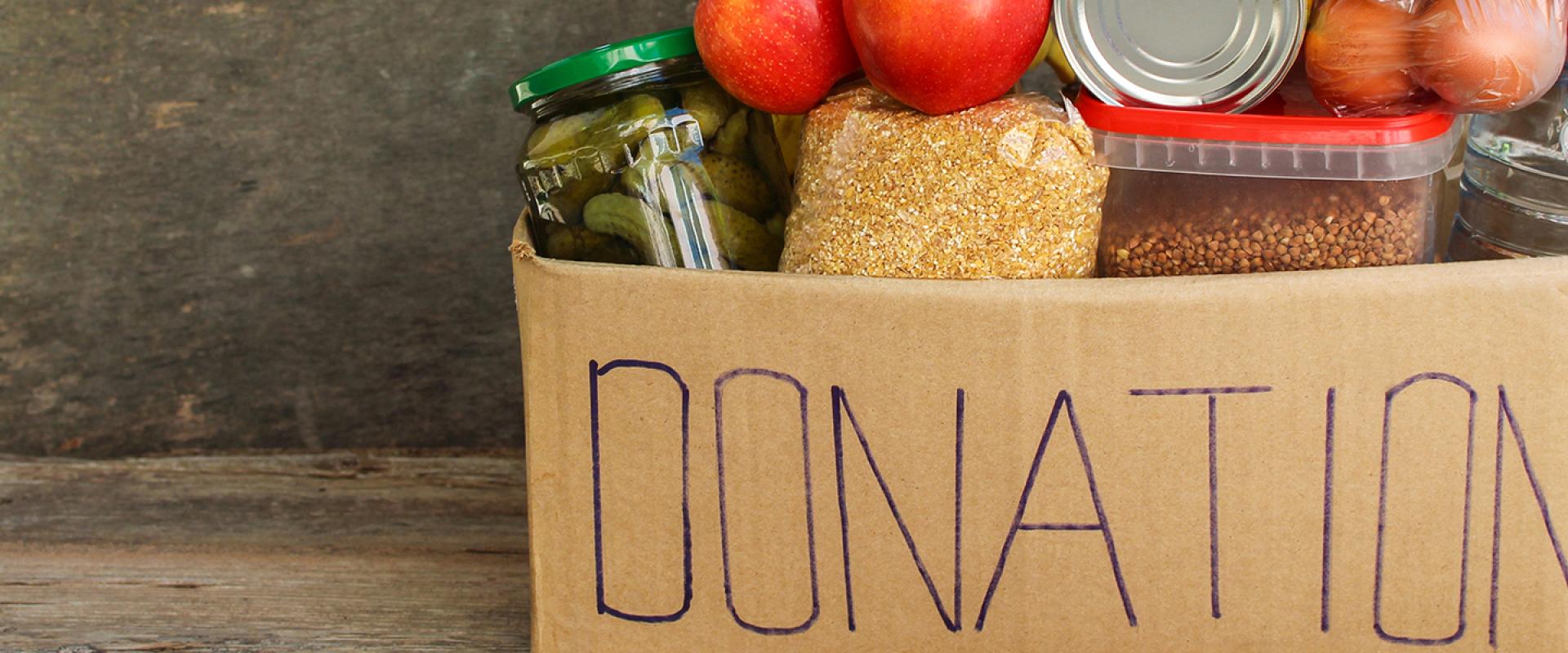
There are a range of health and support services, programs and resources to support our community.
There are a range of health and support services, programs and resources to support our community.

These community-based agencies and organisations provide emergency relief and material aid such as food hampers, vouchers and pantries to people in financial crisis living in Manningham as part of the Food Relief Network.
Homelessness and crisis accommodation and support
We take a dignity first approach to homelessness, recognising that homelessness or sleeping rough in public places is not illegal. With the ever-increasing cost of living, and any one of a number of life changing events, people can find themselves needing crisis accommodation when they least expect it.
We work closely with a range of service providers to enable people experiencing homelessness, sleeping rough and/or needing crisis accommodation to find a safe place to rest.
If you do have a welfare concern for a person who appears to be experiencing homelessness and/or sleeping rough, contact us on 9840 9333 and we will make a referral to the appropriate service provider.
The following community agencies provide crisis accommodation and support:
If emergency assistance is required or a person is suspected of committing an offence or is engaged in any illegal activity, the matter should immediately be reported to the Victoria Police on 000.

Our community is diverse with residents from more than 140 countries.
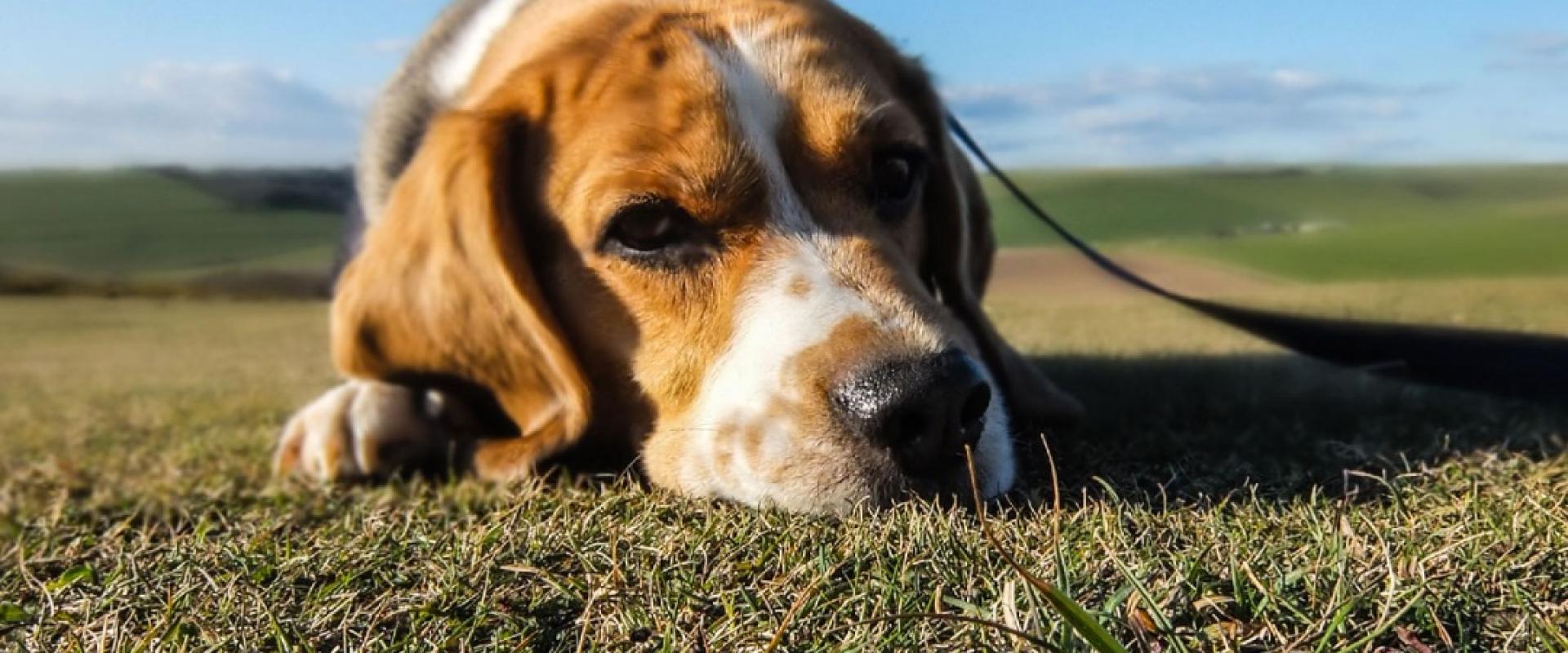
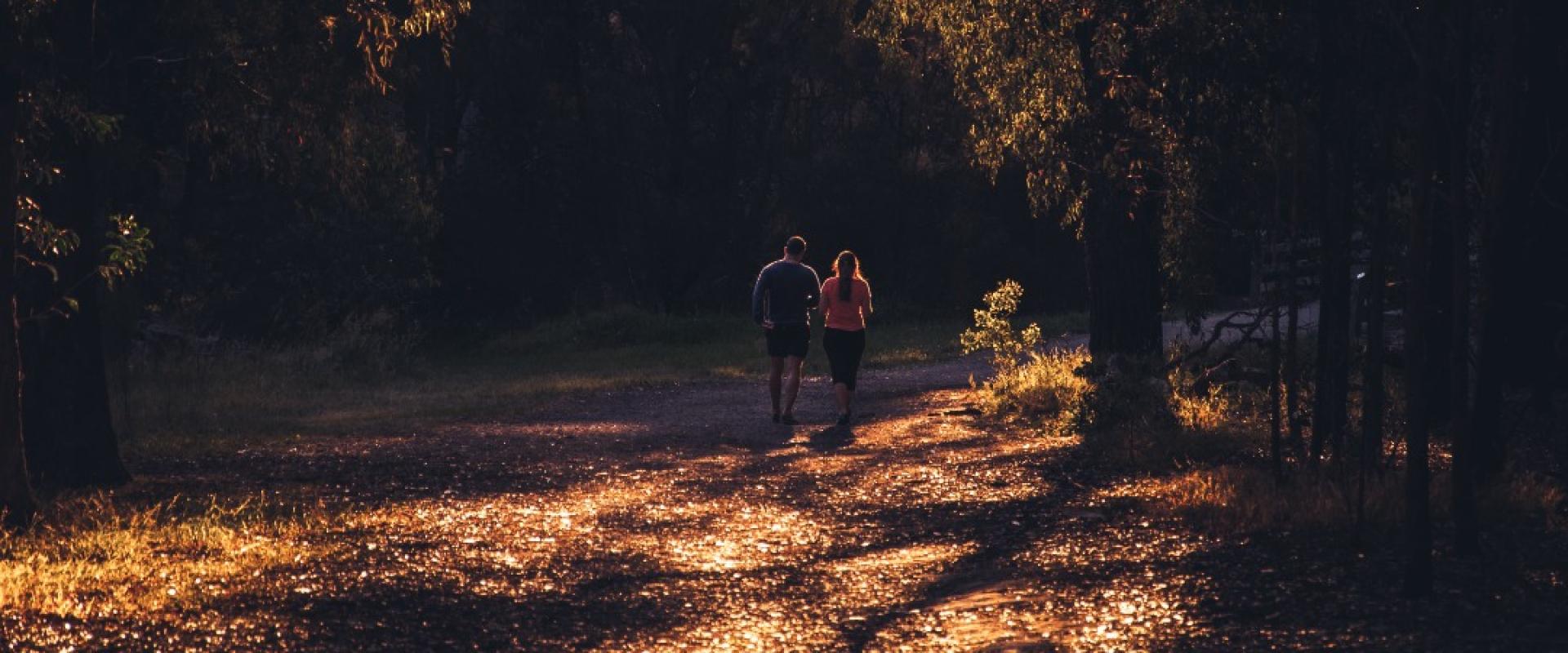
Mental health is a state of emotional, social, and psychological wellbeing. It affects how we think, feel and act. It also impacts how we handle stress, relate to others, and make choices.
Find support with our online resource directory.
Caroline Ellen is one of Australia's most trusted parent educators. Through her presentations, podcast, online courses, private coaching, and online membership, she has helped thousands of families build stronger connections. After 15 years of being a social worker specialising in children and families, Caroline has seen first hand what information and support parents really need in order to make changes at home. Caroline delivers difficult, often challenging information in a style that feels relatable, reassuring, and safe.
In Kids, nudes & the internet, Caroline provides practical resources and advice you can put into immediate action. We'll explore what you can do to reduce the risk of harm, and how to take action if things go wrong.
Caroline's advice is clear, actionable, and empowering. Parents walk away feeling more confident about what action they can be taken to protect their children and ensure a safer, stronger future.
This event is proudly supported by Manningham Councils Community Grants Program.
An El Niño summer is coming. Recent rainfall has supercharged fuel loads. Dry conditions will increase fire risks next summer, especially grass fires.
In this webinar you will find advice on reducing the risk for you and your home during and before a bushfire.
Presenters include:
You will have the opportunity to ask questions before or during the webinar.
About the Get Bushfire Resilient webinar series
Our webinars involve the best presenters and panel members in Australia and include robust audience engagement. Watch the webinars with family and friends and discuss the information and your plans.
Learn how grass fires and bushfires behave and what your family can do to reduce your risks.
Learn from eminent subject experts.
About Bushfire Resilience Inc.
Bushfire Resilience Inc. is an independent community-led organisation. We provide carefully developed webinars that provide information about bushfire preparedness. Our webinar topics are practical, helpful and relevant.
Congratulations on choosing Manningham as your new home.
Manningham prides itself on providing high quality services and a range of lifestyle needs for residents of all ages.
Manningham is located just a short distance from the Melbourne CBD yet you can enjoy a sense of being 'out of the city' thanks to our abundance of green open spaces, scenic outlooks to the ranges, and tranquil walks along our waterways.
It is this unique balance of city and country that makes Manningham such a special place to live.

We are proud to deliver over 100 different services to our vibrant and diverse community. Here are a few to get you started.
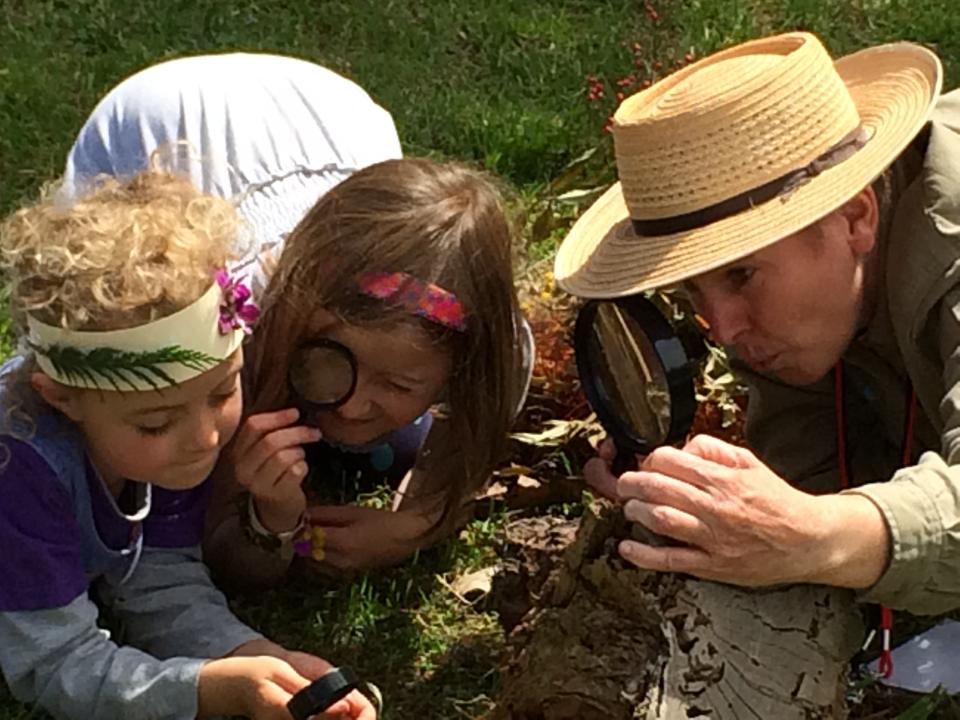
There’s something for everyone in Manningham. From sacred sites of the area’s First Peoples to the early gold mining settlements, the local area has a bit of everything for you to appreciate and enjoy.
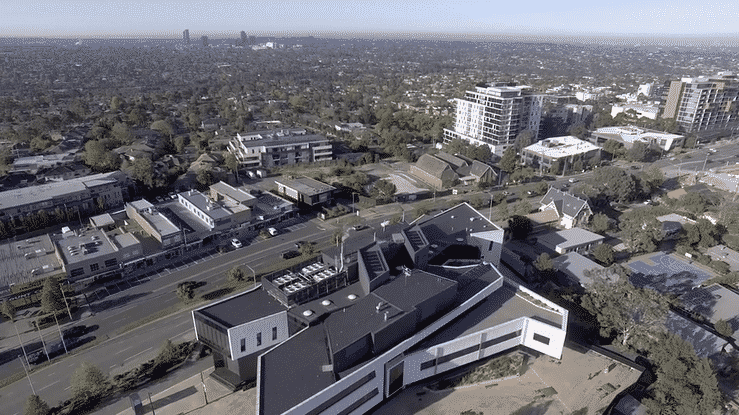
Use our maps to search Manningham, property addresses, wards, healthcare centres and other places of interest.

Explore our local arts, crafts, fashion, food and drink and other recreational activities.
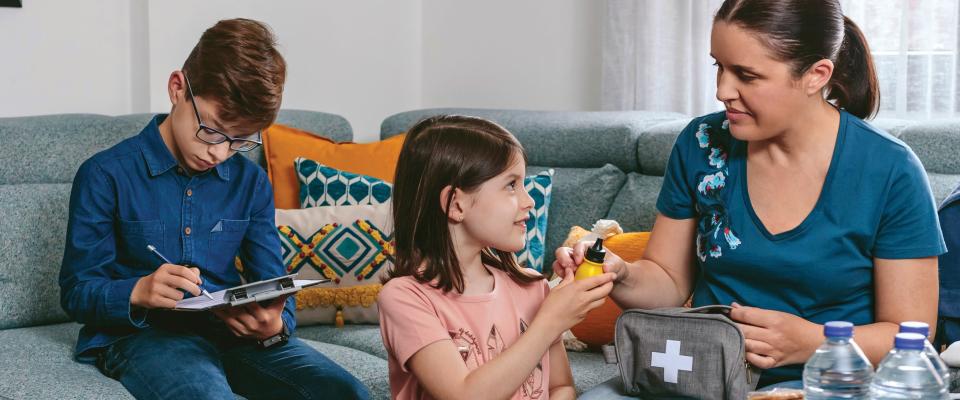
We are at risk of bushfires, flood and storms and work closely with authorities to plan for and be prepared in an emergency. Keep you and your family safe by being prepared and understanding your risks.

Stay in touch with everything that is happening at Council and around our community by subscribing to our monthly eNewsletter. Receive the latest news about our essential services, programs, projects and activities, straight to your inbox.
Skate Park Leagues (SPL) is coming to Warrandyte! Locals will battle it out in the skate, scoot and BMX competitions to decide the winner.
Athletes can compete to be crowned the winner of not only Warrandyte, but also the Victorian Melbourne Metro. Points from each round accumulate throughout the year to decide the best of 2023.
Entry is free and people of all ages and abilities can have a go.
Those still finding their feet get the opportunity to have a go, improve skills and confidence and interact with the pros.
Prizes will be raffled off between competitors so everyone has a chance at taking something home.
Event schedule:
SPL competitions give the community the opportunity to come together, watch and support the talent, get involved and cheer on their own.
The Warrandyte round of SPL has been brought to life through a partnership between Manningham Council, The Y, Victorian Skateboarding Association (VSA), AusCycling and Skate Australia.
Do you want to learn to skate but don’t know where to start?
Come along to an All Aboard skateboarding session to learn skate skill basics and build confidence in a fun and inclusive environment!
You’ll learn about skate skill development, injury prevention, skate park etiquette, equipment maintenance and lots more.
Workshops are led by experienced instructors focusing on building skills in a fun and social environment.
All Aboard skate sessions are open to school-aged children and young people of all genders and abilities. No prior experience is needed.
Come to as many or as few workshops as you like.
Nothing! Skateboards, helmets and padding are all provided. If you have your own equipment and prefer to use that, you can bring it along.
Registration is recommended but not essential.
These are the sessions for Warandyte Skate Park. Looking for something closer to home? More locations are listed below.
These workshops are made possible thanks to Victorian Skateboard Association and a Manningham Community Partnership Grant.
Fast Fashion has become one of the greatest waste problems in the past few years, but how can we change our habits when we’re surrounded by it? The simplest way is to buy second hand and take care of what you already own.
Join permaculture and sustainability educator, Anna The Urban Nanna, to learn about simple, effective ways to lower your environmental impact by using basic mending skills to repair clothes and break up with Fast Fashion.
This free hands-on workshop will take you through the most useful basic mending skills, and help you understand how each one can be put to use in modern wardrobes. You will follow step-by-step instructions to learn several methods of mending, including sashiko, boro and patching, and begin working on your own mending patch to take home. Includes a follow-up list of useful resources and links to many videos showing you how to do each type of mend, step-by-step.
Registration is required and spots are limited.
Do you want to learn to skate but don’t know where to start?
Come along to an All Aboard skateboarding session to learn skate skill basics and build confidence in a fun and inclusive environment!
You’ll learn about skate skill development, injury prevention, skate park etiquette, equipment maintenance and lots more.
Workshops are led by experienced instructors focusing on building skills in a fun and social environment.
All Aboard skate sessions are open to school-aged children and young people of all genders and abilities. No prior experience is needed.
Come to as many or as few workshops as you like.
Nothing! Skateboards, helmets and padding are all provided. If you have your own equipment and prefer to use that, you can bring it along.
Registration is recommended but not essential.
These are the sessions for Lawford Reserve Skate Park. Looking for something closer to home? More locations are listed below.
These workshops are made possible thanks to Victorian Skateboard Association and a Manningham Community Partnership Grant.
Our goal is to support older adults in our community to live well.
Get in touch with the Healthy Ageing team
Our hours of operation are 8.30am to 5.00pm Monday to Friday.
Whether you're an older person, or you care for someone who is, we are here to help you live well.
Our friendly Healthy Ageing team can connect you, and your support networks to:
Want to stay up to date with what’s happening in Manningham for our older residents, their families, and carers? Join our mailing list and we will reach out to you with updates. Sign up now.
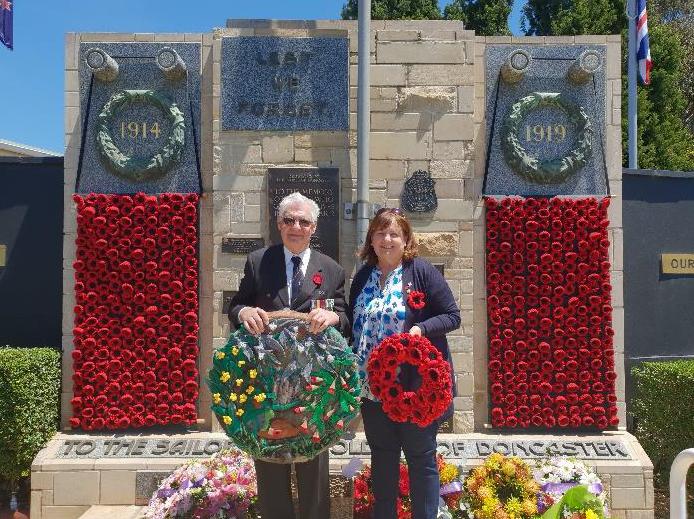
Our goal is to create a liveable and harmonious city where people want to grow older in.
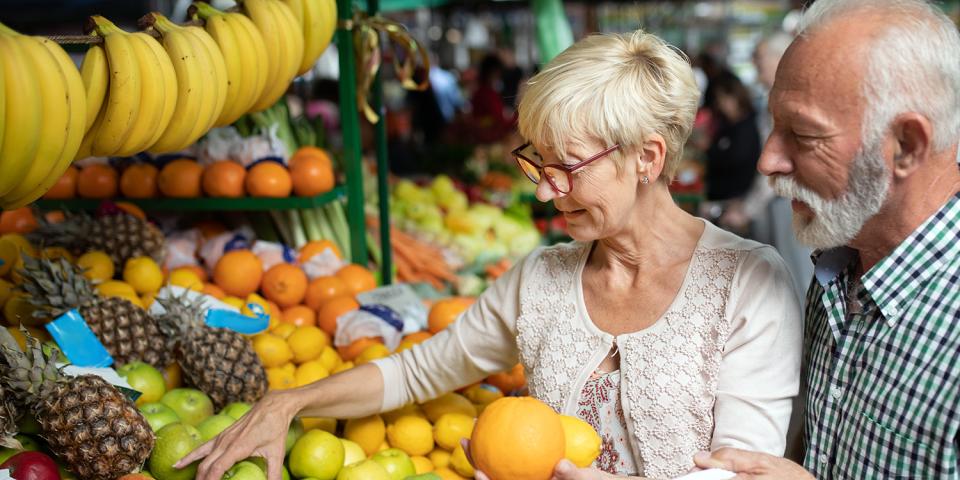
We’re committed to being a dementia friendly city. We recognise that a person with dementia can still be an active member and can still live their best lives

Everyone has the right to live their lives free from abuse.

We have several clubs in Manningham for older adults. The centres and clubs provide social and recreational opportunities for older people.
Are you or the older person you are caring for in need of the following services:
Meeting Date: 26 April 2023
Meeting Time: 7.00pm
Location: Council Chamber, Civic Centre 699 Doncaster Road, Doncaster.
| Timecode | Item |
|---|---|
| 4:33 | 5. PRESENTATIONS |
| 6. PETITIONS | |
| 5:02 | 6.1 Installations of Rubber Guards or Bollards at Tunstall Square |
| 6:20 | 6.2 Request to Continue Meals on Wheels Delivery Service |
| 7:40 | 6.3 Support for the In-Home and Aged Care Program Funded by the Commonwealth Government |
| 8:50 | 7. PUBLIC QUESTION TIME |
| 16:40 | 8. ADMISSION OF URGENT BUSINESS |
| 17:24 | 9. PLANNING PERMIT APPLICATIONS |
| CITY PLANNING | |
| 17:33 | 10.1 Macedon Square Project Update |
| 11. CONNECTED COMMUNITIES | |
| 31:57 | 11.1 Community Infrastructure Plan for Public Exhibition |
| 42:00 | 11.2 Manningham Disability Advisory Committee Membership |
| 12. CITY SERVICES | |
| 45:00 | 12.1 Street Tree Planting Guide |
| 58:37 | 13. EXPERIENCE AND CAPABILITY |
| 14. CHIEF EXECUTIVE OFFICER | |
| 58:44 | 14.1 Audit and Risk Committee Chair's Biannual Report |
| 1:02:20 | 14.2 Informal Meetings of Councillors |
| 15. URGENT BUSINESS | |
| 1:02:59 | 15.1 Public Transport in Manningham |
| 1:12:58 | 16. COUNCILLOR REPORTS AND QUESTION TIME |
| 1:22:00 | 17. CONFIDENTIAL REPORTS |
The Doncaster East Honour Board hangs within the Doncaster RSL.
Find out more about the soldiers.
Ethelbert Crouch was born in 1886 in Doncaster to Henry William and Hert Amelia Crouch. He went to Doncaster State School and attended the Holy Trinity Sunday School and Youth Group.
Ethelbert enlisted in the Australian Imperial Force (AIF) on 22 July 1915 and just over six months later, left for Cairo in Egypt on board His Majesty’s Australian Transport (HMAT) Demosthenes. In March the next year he came down with bronchitis and was hospitalised for two weeks before joining his unit as part of the 6th Battalion in France on 15 May 1916.
Ethelbert suffered wounds to his head, chest and hands on 5 October 1917 and spent the rest of the year recovering in various English hospitals, with “loss of sight resulting from wounds” and a traumatic cataract in his right eye. Recommended for the Distinguished Conduct Medal, he left for home on the hospital ship, Osterley, and was discharged on 25 June 1918.
Ethelbert married Victoria Lillian Petty and they raised a family on their orchard in Woodhouse Street, Doncaster East. He died in 1987 at the age of 101.
John William Downing was born in 1894 in Elsternwick to William Henry Hambling and Mary Ann Downing. He had two other siblings. In 1917 the family were living in Hunt Street, Doncaster East. After leaving school John trained as an engine fitter.
John enlisted on 5 February 1917 and left from Sydney on board His Majesty’s Australian Transport (HMAT) Marathon on 10 May 1917. He was attached to the Australian Flying Corps based at Farnborough Training Depot in England. He qualified as a First Class Air Mechanic on 1 November 1917 and was based in England at the AFC Training Depot in Wendover. He was discharged on 16 June 1919 after returning to Australia on HMAT Kaiser-I-hind.
John also served during World War II and was known to be living in Queensland in 1959.
Stanley Crouch was born in 1892 in Doncaster. His parents were Henry and Marion Crouch. He was educated at Doncaster State School and attended Sunday School and Youth Group at Holy Trinity Doncaster. After leaving school he worked on the family orchard.
Stanley enlisted on 7 July 1915 and left Melbourne on 10 November 1915 on board His Majesty’s Australian Transport (HMAT) Ascanius for France. As part of the 29th Battalion, C Company, he was wounded on 28 August 1916 but remained on duty. He was again wounded in action by gunshot to the chest and transferred to England for treatment at the Horton War Hospital, Epsom. He returned home on 4 May 1917 on the hospital ship, Miltiades, and was discharged from the army on 13 August 1917.
Stanley returned to Doncaster to work as an orchardist. He married Agnes Elizabeth Bienvenu of Leeds Street, Doncaster and died in 1975, aged 82.
Norman Crossman was born on 22 November 1894 to Charles and Sarah Crossman. He was educated at Doncaster State School and joined in all the activities of the youth group at Holy Trinity Sunday School.
Norman enlisted on 17 July 1915, initially serving with the Senior Cadets and training with the Citizen Forces at Box Hill. He married Phyllis Diamond just before leaving for England on His Majesty’s Australian Transport (HMAT) Persic on 22 December 1916. He served as a driver in the headquarters of the Australian Imperial Force (AIF) Depot in England where he was also trained as a gunner.
Norman was sent to France as a driver on 3 November 1917 and was injured in his left leg on 15 October 1918. After initial treatment in Rouen Hospital, on 17 October he was transferred to the Bath War Hospital in England then returned to Melbourne on the hospital ship, Orantes, arriving on 30 January 1919. After his discharge from the army, Norman and Phyllis lived in South Geelong.
Richard Harold Clay was born on the 10 February 1894, to Richard and Mary Clay who were orchardists in the region. He was always called Harold to avoid confusion with his father Richard. Harold was a popular and active member of the Holy Trinity youth group, and a bass singer in the church choir.
Harold enlisted for military service on 6 July 1915, leaving Melbourne on the Empress of Britain and arriving in Alexandria, Egypt, on 7 January 1916. As a member of the 14th Field Artillery Brigade in the 8th Battalion, he was involved in action at Alexandria, Serapeum and Tel-el-Kebir and quickly promoted to the rank of Sergeant.
Harold was severely wounded on 31 July 1917 at Ypres in Belgium and died on 4 August 1917, unaware that his mother had died in Doncaster only two weeks earlier. He was 23 years old.
Army records use the name Harold Richard Clay and it was not until forms were sent to the next of kin for the Roll of Honour at the Australian War Memorial that the error was discovered and corrected.
Harold is buried at the Brandhoek New Military Cemetery, Belgium, and his name is on the Australian War Memorial, Canberra, and the Doncaster War Memorial.
Henry August Fromhold was born on 5 September 1891 to Heinrich Augustus Fromhold and Annie Marie Zerbe in Doncaster.
Henry’s parents were both from well-known orcharding families in the district, so he followed in the family footsteps as an orchardist before enlisting at the age of 23. He served in the 4th Light Horse Regiment before being hospitalised with synovitis (joint inflammation) in November 1917.
In February 1918, Henry rejoined his regiment in India before returning to Australia a year later. Henry was awarded the 1914-15 Star, British War Medal and the Victory Medal for his service during World War I.
Henry settled back into the local orcharding life in Doncaster and married Adela Elizabeth White in 1920, with whom he had two children. He died in October 1960, aged 69.
Born in 1894 to William Elder and Elizabeth Rose Williams, Frank was the middle brother of three brothers from the district who served in World War I. Corporal Murray Elder was killed in action at Bullecourt, France in 1918 and Driver Thomas William survived the war and returned to Australia in March 1919.
An accountant by profession, Frank enlisted in the Australian Flying Corps at age 21 on 9 July 1915 where he served in Egypt as part of No 1 Squadron’s Australian Army Pay Corps. During his service, he was hospitalised for ‘melancholia’ (an old term for depression) before returning home on 12 November 1917. For his service he received the British War Medal and the Victory Medal.
Thomas William Elder was the eldest of three Elder brothers who served from the district in WWI. He was born in 1882 to William Elder and Elizabeth Rose Williams. His brothers were Private Frank Elder (who survived the war and returned to Australia in November 1917) and Corporal Murray Elder (killed in action at Bullecourt, France in 1918).
Thomas married Laura Marion Maskiell in 1906 and worked as a fruit grower in the district. He enlisted in Doncaster on 8 March 1915 and served as a driver with the 23rd Infantry Battalion in France. He was wounded in action on 28 July 1916 with a slight gunshot injury to his left leg and re-joined his unit almost a year later before returning home on 9 March 1919. Thomas received the 1914-15 Star, British War Medal and Victory Medal for his service in WWI. He died on 29 December 1955 aged 72.
Murray Elder was the youngest of three Elder brothers who served from the district in World War I. He was born in 1896 to William Elder and Elizabeth Rose Williams. His brothers were Private Frank Elder (who survived the war and returned to Australia in November 1917) and Driver Thomas William (who returned to Australia in March 1919).
Murray was born in Doncaster West in 1896 and attended Doncaster East State School before taking up work as a clerk. He enlisted on 15 March 1915, two months before his 19th birthday. Murray served at Gallipoli and in France. He was wounded in action on 3 May 1917 with a gunshot injury to his left leg.
Murray re-joined his unit in November 1917 and was killed in action in Bullecourt, France, less than a year later on 10 June 1918, aged 22. Murray is buried in Ribemont Communal Cemetery Extension (Somme) in France and his name is at panel 99 in the Commemorative Area at the Australian War Memorial in Canberra.
Herbert Harry Edgoose was born in 1885 in Port Fairy to John James Edgoose and Sarah Ann Adams who had seven other children.
One of Herbert’s brothers was Lieutenant Percy Llewellyn Edgoose who served in the 7th Infantry Battalion until March 1919. Herbert was a clerk by profession and enlisted in the Australian Army’s Medical Corps at the age of 31. He served with the 14th Australian General Hospital and Reinforcements from July 1916 to November 1917 on the Western Front in France before being wounded in action.
Herbert returned to Australia on 22 September 1919 where he was awarded the British War Medal and the Victory Medal for his service. He married Ethylene Elizabeth Le Lievre in 1920 and died at age 60 in Richmond.
Harold Downing was born in 1898 in Albert Park to William Henry Hambling Downing and Mary Ann Cock of Doncaster East. He was the brother of Private John William Downing of the Australian Flying Corps who returned to Australia in May 1919.
A grocer’s assistant, Harold enlisted on 8 July 1916 aged 18 and served in the Australian Army’s 38th Infantry Battalion from June to December that year. He was killed in action on the Western Front in Belgium on 4 October 1917 at the age of 19. He is remembered on Panel 25 of the Ypres (Menin Gate) Memorial in Belgium, alongside the names of more than 54,000 soldiers whose graves are also unknown.
Born in 1880, Albert Clegg was the son of Edward Clegg and Susanna Whitworth, one of seven children.
Albert attended Doncaster State School and worked as an orchardist before enlisting on Christmas Day 1915. He joined the 24th Infantry Battalion (9th to 12th Reinforcements) from February to April 1916 and was promoted to Sergeant on 7 January 1917.
Albert was killed in action at the age of 37 on the Western Front in Grevillers, France, on 13 March 1917. Albert is buried in Adanac Military Cemetery (plot II, row 1, grave no 2) in Miraumont, France. His name is also located at panel 101 in the Commemorative Area at the Australian War Memorial, Canberra.
Stuart Clark was born in 1884 in Dunkeld to Robert and Louisa Clark of Doncaster East. He was the elder brother of Driver Hector Clark who returned to Australia in October 1918.
A farm labourer until he enlisted at the age of 28, Stuart joined the 7th Infantry Battalion. He served in Egypt as a trooper in the 14th Light Horse Regiment and Camel Corps before being wounded in action on 8 August 1915 with a slight gunshot wound to the hand. He was hospitalised for this injury and others (jaundice and rheumatism) during his service, then returned home on 5 March 1919.
Stuart received the 1914-15 Star, British War Medal and the Victory Medal for his contribution during World War I. He died aged 41 in February 1926.
Hector Clark was born on 20 May 1894 in Roseberry to Robert and Louisa Clark of Doncaster East. He was the younger brother of Trooper Stuart Clark who returned to Australia in March 1919.
Like his older brother, Hector was a labourer and enlisted early in the war on 20 August 1914, aged 20 years. He served as a driver as part of the Divisional Train (1st to 4th Companies, Army Service Corps) on the Western Front in France until returning home on 15 December 1918 on His Majesty’s Australian Transport (HMAT) Borda.
For his service during World War I, he received the 1914-15 Star, the British War Medal and the Victory Medal. Hector marred Estella Mary Logan in 1920 and died in Hastings on 26 March 1961.
Alfred Caunter was born in 1886 in Cornwall, England, to Edwin Caunter of Launceston, England. He worked as a farmer before enlisting on 6 November 1916 in the 37th Infantry Battalion of the Australian Army from February to December 1917.
His unit left Melbourne on His Majesty’s Australian Transport (HMAT) A70 Ballarat. The troopship was bound for England but was torpedoed by a submarine in the English Channel on 25 April 1917 and sank the next morning despite efforts to tow the ship to shallow water All 1,752 people board were evacuated.
Alfred served in France until he returned home on 5 September 1919. He received the British War Medal and the Victory Medal for his service during World War I. He died on 17 April 1959 aged 85.
William Michael Breheny was born in 1893 in Rushworth to Patrick Breheny and Margaret McGuiness.
William worked as a labourer before enlisting in the Signals Corps as part of the 13th Light Horse Regiment at age 22 in January 1915. He served at Gallipoli and in France before returning home on 5 June 1919.
William married Elise Lousia Read in September 1944 and had two children but died less than five years later on 1 March 1949. He received the 1914-15 Star, the British War Medal and Victory Medal for his service during World War I.
James Beavis was born in Nunawading in 1873 to William Beavis and Margaret Harbour.
A labourer before enlisting on 27 August 1915, James served in France as part of the 1st Division Salvage Company in the 6th Infantry Battalion from December 1915 to July 1916.
He was reported missing in action for a day on 16 August 1916, with the official paperwork describing him as a “well-known woodchopper in sports with a big build, slightly grey”. James returned home on 12 May 1919. James married Bessie Rose Henty Fereday in 1931 and died in 1957, aged 84.
Ashby Hardridge was born on 6 April 1896 to Arthur Hardridge and Caroline Hillman. Before enlisting in Doncaster on 26 June 1916 at the age of 20 he worked as a salesman.
Ashby served in the 57th Infantry Battalion in France and was wounded in action with a gunshot injury to his left foot on 18 May 1917, before being temporarily promoted to Corporal on 21 December 1917. Ashby was wounded three more times during his service before returning home on 4 January 1919 on the Royal Mail Steamer, Moldavia. Royal Mail Steamers mostly carried mail between Australia and England and only occasionally carried troops, including some from the First Australian Imperial Force (AIF).
Ashby married Florence Adelaide Craze in 1925 and received the British War Medal and Victory Medal for his service in World War I. He died at age 57 on 14 September 1953.
Eric Hillman was born in 1898 to Francis Hillman and Annie Sleeth in Doncaster. A fruit grower before enlisting at age 18 on 6 March 1916, Eric joined the 37th Infantry Battalion and fought in France on the Western Front.
Eric was killed in action at Passchendaele in Belgium on 4 October 1917, aged 19, and was posthumously awarded the British War Medal and Victory Medal. He is buried at Tyne Cot Cemetery (Plot XXII, Row E, Grave 12) in Passchendaele (Belgium) and remembered at panel 128 in the Commemorative Area at the Australian War Memorial, Canberra.
Arthur Ireland was born on 2 September 1896 in Doncaster East, the only child of Elijah Ireland and Keziah Emma Bowers.
He worked as an orchardist in the area before enlisting at the age of 18 on 13 July 1915 and joining the 29th Infantry Battalion in France. Arthur served in the 13th Field Artillery Brigade and was promoted through the ranks during his service, eventually becoming a Lieutenant on 10 July 1918.
He returned to Australia on 18 May 1919 and received the 1914-15 Star, British War Medal and Victory Medal for his service during World War I.
Arthur married Mabel Blanch Peter-Budge in 1920 and served as Commissioner of the Melbourne and Metropolitan Board of Works (MMBW) for 39 years. He was also recognised with an MBE (Member of the Order of the British Empire) for his long-standing service as a councillor. Arthur died on 2 August 1989, aged 92, and is buried in Templestowe Cemetery.
Herbert Johnston was born on 2 October 1870 to Waldron Johnston and Susan Kent. He worked as a carpenter before enlisting in Doncaster East on 12 July 1915 at the age of 44.
By July 1915, the age limit had risen from 38 to 45 and the minimum height requirement had fallen from five feet six inches to five feet two inches. In April 1917 the minimum height was lowered again to five feet.
During the first year of war approximately a third of volunteers were rejected due to height and age restrictions. However, with the relaxation of physical standards, previously ineligible men could enlist. He joined the 5th Infantry Battalion and served in France.
Herbert returned to Australia on 25 August 1917 and was discharged from the army the following year on 18 February. For his service during World War I he received the 1914-15 Star, the British War Medal and the Victory Medal. Herbert died on 7 April 1949, aged 78, in Doncaster.
Samuel Kent was born in Doncaster on 4 January 1872 to James Kent and Jane Nicholas. He worked as a wood carter before enlisting on 29 February 1916, aged 43.
Samuel joined the 59th Infantry Battalion and served in Abyssinia (Ethiopia) before returning to Australia on 18 August 1916. He received the British War Medal for his service during World War I. Samuel died in Doncaster on 2 June 1938, aged 65.
Thomas Kent was born in 1895 to John Kent and Lillian Eager. A school teacher by profession, he enlisted on 28 April 1916 at the age of 21.
Thomas fought with the 59th Infantry Battalion in France and was promoted through the ranks, from Acting Corporal on 27 July 1916 to Acting Sergeant on 25 September 1916.
He was wounded in action on 2 September 1917 with a gunshot injury to his left foot and hospitalised on 19 December. Thomas re-joined his unit on 15 January and continued to serve until 30 April 1918 before returning home on 5 March 1919. He received the British War Medal and the Victory Medal for his service during World War I. Thomas died on 7 January 1962, aged 66.
Frank Svanborg was born in 1890 to Brewer Fabian Svanborg and Susannah Barton in Doncaster. Frank attended Templestowe State School and then worked as a fruit grower before enlisting on 12 July 1915 at the age of 24.
He joined the 22nd Infantry Battalion as part of the 13th Field Company Engineers in France where he was wounded in action on 2 September 1916. Frank had his wounds dressed and remained on duty. Unfortunately, the following year on 23 February he was shot again, this time severely in the back and abdomen, and died of his injuries at a casualty clearing station near Albert (France) on 4 February 1917, aged 25.
Casualty clearing stations were usually sited adjacent to railway lines to make it easier to move casualties from the battlefield to hospitals. These large stations moved frequently following the aftermath of large-scale attacks. Their locations can often be identified from the military cemeteries around them.
Frank is buried in Dernancourt Communal Cemetery (Plot IV, Row H, Grave 36) in France and is remembered on panel 25 in the Commemorative Area at the Australian War Memorial in Canberra. Frank was posthumously awarded the 1914-15 Star, the British War Medal and Victory Medal for his sacrifice in World War I.
Geoffrey Uebergang was born to Pauline Caroline Uebergang in Doncaster. He worked as a carpenter before enlisting on 10 September 1915 at the age of 22.
Geoffrey joined the 9th Field Ambulance unit as part of the 23rd Howitzer Brigade and Brigade Ammunition Column in France. He was hospitalised for influenza on 10 September 1917 and two days later was afflicted with trench fever.
Geoffrey returned home on 22 May 1918 and married Alice Mabel Aumann the following year. He died at age 81 and is buried in Templestowe Cemetery. Geoffrey received the British War Medal and Victory Medal for his service in World War I.
Gordon Alexander White was born on 4 February 1893 in Doncaster East to Henry White and Elizabeth Jane MacDonald. He worked as an orchardist before enlisting on 26 May 1916 at the age of 22.
Gordon joined the 8th Light Horse Regiment in France where he was wounded in action with an injury to his left knee caused by a bomb blast, on 19 April 1917. He re-joined his unit on 12 May. He returned home to Australia on 19 August 1919. Gordon received the 1914-15 Star, the British War Medal and the Victory Medal for his service in World War I.
Gordon married Florence Gertrude Mann on 1 April 1922 in Doncaster East and raised two children. He died in Doncaster East on 6 July 1970 aged 77.
John White was born on 26 June 1891 to Elijah White and Harriet Lousia Matthews and had a younger brother, Private Oliver White, who also served in World War I. John worked as a driver before enlisting in Doncaster on 8 March 1916 and joining the 57th Infantry Battalion in France.
He was wounded in action with a gunshot injury to his right shoulder on 9 May 1917 and returned home to Australia on 22 October 1917. John died on 11 November 1983, aged 92. He received the British War Medal and Victory Medal for his service during World War I.
Oliver White was born on 12 November 1894 to Elijah White and Harriet Louisa Matthews and had an older brother, Private John White, who also served in World War I. Oliver worked as an orchardist before enlisting on 17 October 1916 at age 22 and joining the 24th Infantry Battalion in France.
He was hospitalised for influenza on 31 January 1917 and again for an injured knee on 25 July 1917 and 31 July 1918 before returning home on 1 February 1919.
Oliver married Alice Rose Knee on 17 September 1919 and the couple had three children. Oliver died on 11 September 1965 aged 71. He received the British War Medal and Victory Medal for his service during World War I.
Fredrick Zerbe was born on 10 October 1894 in Doncaster to Fredrick Carl Zerbe and Marie Eliza Aumann.
Fredrick worked as an orchardist before enlisting on 8 November 1916 at age 21. He joined the 8th Infantry Battalion in France, was wounded in action with a gunshot injury to his left arm on 11 February 1917 and returned home on 6 November 1919.
Fredrick married Ada Emma Spackman the same year and they had one child. He died in a car accident on 12 June 1936, aged 41. Fredrick received the British War Medal and Victory Medal for his service during World War I.
Edward Herman Zerbe was born on 15 January 1891 in Doncaster to Johan August Zerbe and Augusta Bertha Fuhrman.
He worked as an orchardist before enlisting on 12 May 1915 at the age of 24. Edward was assigned to the 5th Reinforcements of the 21st Infantry Battalion and after training in Egypt, moved to France to serve on the Western Front.
Edward was hospitalised for fever on 16 November 1918 that developed into bronchopneumonia (possibly Spanish flu) and was transferred to England to recover. An examining doctor noted he “looks depressed and nervy. Tremulous and sweaty hands”, suggesting that he may have been suffering from delayed shellshock.
Edward returned to Australia on 31 March 1919 and the following year, married Elizabeth Winifred Lawford on 25 September in Doncaster. The couple had three children.
Edward died on 5 April 1957, aged 65. He received the 1914-15 Star, the British War Medal and the Victory Medal for his service during World War I.
Seeing small birds visit our gardens is a wonderful experience and there are many ways we can create our gardens to encourage their visits.
This workshop will share some of the challenges small birds face in the urban environment and what can be done to create a safe and inviting home for them. A few of the local small bird champions will also be introduced and the session includes tips for providing food, shelter, water and breeding sites to create habitat for birds.
Presenter: Charlotte Harrison from Sustainable Gardening Australia.
Supper is at 6.45pm, the seminar begins at 7.00pm sharp.
Registration is essential.
This is the final session of a four-part series on Gardening for Biodiversity. The series of workshops is run by Sustainable Gardening Australia and provides tips and tricks to garden for wildlife and support biodiversity in your local area.
Two exhibitions of tactile, abstract works that recontextualise commonly encountered materials, celebrating the everyday and unpredictable process driven experimentation. ...
Manningham Art Gallery presents two exhibitions of tactile, abstract works that recontextualise commonly encountered materials, celebrating the everyday and unpredictable process driven experimentation.
Anni Hagberg’s Trace Encounters employs foraging practices, ceramic processes, and experimental installation to explore uncertainty as a contemporary human condition.
Rejecting linear understandings of progress, foraging practices embody a sense of agnostic curiosity. Opportunistically engaging materials, which present themselves within the environment through the process of being discarded by one and found by another, foraging encourages lively interaction with the environment.
Rhys Cousins work homes in on otherwise ordinary and ignored surfaces that one might expect to encounter on any given day. It acknowledges life as complex sensory jigsaw, but deliberately strips away the smells, sounds, language, and colour of that puzzle to explore only touch and the external physical qualities of the myriad materials that make up the urban places we live.
Examining the importance of touch as a physical and emotional experience - helping us to make sense of the world, the work also highlights how texture is made as much through presence as absence, with the solid bumps and ridges in a surface playing as great a role in creating its overall texture as its voids, crevices, nooks, and cracks.
Cousins and Hagberg’s works are activated across Gallery 1 and 2.
Installation View, Manningham Art Gallery, March 2022. Photo by Charlie Kinross.
We are actively working towards a Dementia-Friendly Community.
In a Dementia-Friendly Community, people committed to making change come together. They create a more inclusive, supportive and welcoming place where everyone can thrive.
People living with dementia are at the heart of all dementia-friendly communities, sharing their experiences to help create an inclusive community for all. You can be an individual, a group, a business or organisation, anyone can make a difference.
Each Dementia-Friendly Community is unique, they may include social, sporting, recreational, faith-based or community groups. However, what they all share is that they engage with people living with dementia to understand their needs to create inclusive and supportive environments.
After a dementia diagnosis, it’s easy for you or your loved ones to feel overwhelmed. Support is available to help maintain a person’s independence and help them live well.
Dementia Australia can help individuals, couples and families by helping you:
Free and confidential, the National Dementia Helpline provides expert information, advice and support 24 hours a day, 365 days a year. They can:
Call 1800 100 500 to speak with the National Dementia Helpline.
Misusing words with negative connotations when discussing dementia can have negative impacts. It can also lead to stigma or discrimination. To ensure that the words we’re using are sensitive to those affected by dementia, Dementia Australia’s language guidelines is a great resource.
You can visit Dementia Australia’s Quicklinks to find information relating to dementia, support, information and services provided by Dementia Australia.
The revised Dementia Information Booklet was created in partnership with community members with lived dementia experience. Download a copy below or pick up a hard copy from various locations throughout Manningham, including libraries, medical centres, neighbourhood houses and the Manningham Civic Centre.
Proudly, the entire Healthy Ageing Team at Manningham are Dementia Friends. Being a Dementia Friend means we are interested in learning how to support our community to become more friendly and inclusive of people living with dementia.
You can become a Dementia Friend and make a positive difference to people living with dementia. Register today and help increase awareness and support for people living with dementia.
Setting up a new business is an exciting and challenging time with many things to consider such as budgets, staffing, branding, operations and marketing. It's important to think about the big picture and how you would like to grow into the future.
Below you'll find a range of resources, tools and information available to support all types of local businesses.

The Manningham Business Team are here to assist you with resources, networking events and various training programs throughout the year.

Have a new business idea? Find out when you need a permit and where you can get advice.
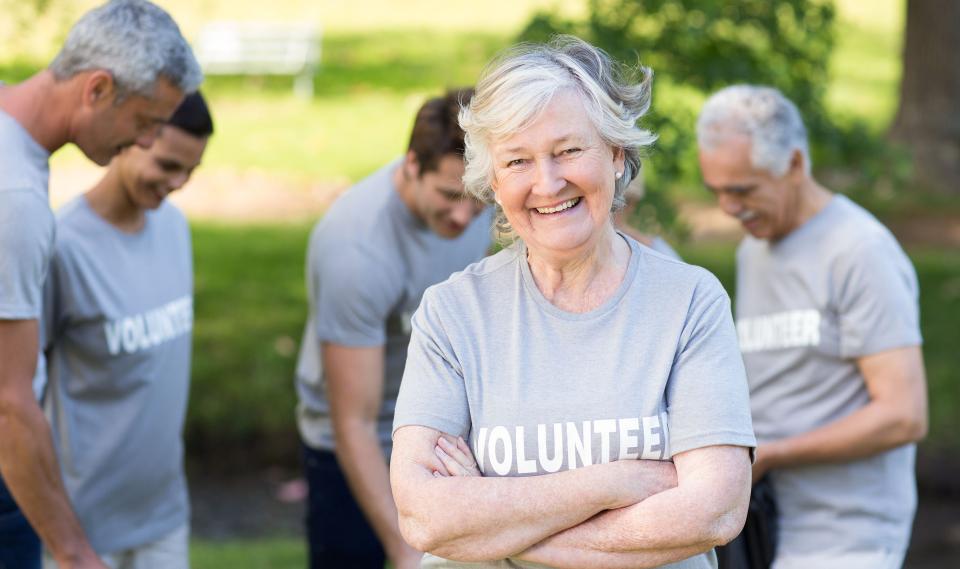
Eastern Volunteers delivers services directly to the community and encourages and supports volunteering in the community.
There are a range of local associations that encourage networking and mentoring opportunities for small businesses as well as annual events and training.
Before embarking on building, renovating, tree removal/lopping or any other works, it is important to ascertain whether you require a permit.
Planning permits and building permits serve different purposes.
A planning permit is required to ensure that your project complies with the relevant zoning and overlay controls applicable to your property and to ensure that your project considers its impact on the surrounding area with respect to character, built form and materials, surrounding neighbours, traffic, environmental impacts and community need.
A building permit focuses on the technical aspects of construction and safety ensuring that your project complies with the relevant building codes and regulations.
Links to the relevant controls are:
Here are some common projects that need approval - contact us even if your project is not listed here:
New to building or renovation?
For advice on all things renovation and construction, visit the Victorian Building Authority (VBA).
Every dream project is different with its own needs and challenges. Here are the steps to give you a rough guide on the process, timeframes and costs when starting any project.
You can also view:
If you don't need a planning permit you can proceed straight to building permit
After you apply you can also
We do not issue building permits so you will need to contact a building surveyor to organise a building permit.
You will need the permit to ensure what you're hoping to construct or change is done right and to building code standards.
You may need permits for connecting to infrastructure, protection of public assets and more. Often you will find out which permits you need throughout the process, so it is always best to discuss your plans with us or industry professionals.
Some common permits include:
Hoping to build sustainably?
We've created a list of resources to help you build a sustainable, energy-efficient home or commercial building.
View resources
The countdown is on for Manningham’s biggest event of the year! Kick-start your festive season with an evening of family friendly entertainment at Manningham’s Carols by Candlelight on Friday 13 December at Ruffey Lake Park, Doncaster.
Get ready to sing along at Carols. Download the digital songbook for songs, lyrics and program line up.
The kids will be smiling for hours with our exciting pre-show entertainment, which includes face painting, tasty food trucks and a variety of fun activities in our Kids Zone.
To make the experience even more enjoyable, the Veneto Club Choir, Doncaster Youth Rock Band and Aquarena Zumba will perform live on stage!
The evening will be hosted by your beloved Carols favourites, Lucy Holmes from Light FM and Richard Thomas. This year’s line up will have you singing along with some of Manningham’s most talented local artists.
Enjoy your favourite carols tunes performed by local and national artists! And don’t miss our very special guest – Santa will be stopping by at 8.00pm.
Wrap up a magical evening with our breathtaking firework finale that will dazzle and delight.
We aim to make Carols accessible to all by providing:
If you can't make it in person at Ruffey Lake Park we've got you covered.
Join us online and enjoy entertainment from local and national performers.
The livestream will start at 6.00pm. You can also watch it live on Facebook.
Manningham Carols by Candlelight is a smoke-free, family friendly event.
The survey prize draw winners each receive one of three $100 Find Your Local EFTPOS gift cards. Congratulations to:
The scavenger hunt prize draw winners each receive one of four $50 Find Your Local EFTPOS gift cards. Congratulations to:
Manningham Carols by Candlelight is proudly presented by Manningham Council. Thank you to our event sponsors Barry Plant Manningham, Silver Star Mercedes-Benz Doncaster, Optus, Montessori Academy, Visy and Doncaster Orthodontics.
This is a smoke-free family event.
Getting to Carols and parking
Road closures
Find out what we're advocating for with the North East Link Project. ...
The State Government has now commenced works for the North East Link Program (NELP).
The project will include construction of the North East Link Tunnels, which will connect the Metropolitan ring road (M80) and Eastern Freeway (M3), as well as:
North East Link is split into five construction packages, with the following three located in Manningham:
Council is continuing to work diligently alongside North East Link Program and State Government on all aspects of the project.
We’re committed to representing community interests with the aim of mitigating impacts, as far practicable, to the community.
Bulleen Park is being upgraded to support sporting clubs during the construction of North East Link.
Future redevelopment of Bulleen Park will allow for continued use of the sporting and recreation facilities during the delivery and following the completion of the North East Link Program (NELP).
The redevelopment will result in a major upgrade to the football (AFL) and cricket facilities and include:
The project is expected to be completed by 2028. During this period, NELP will continue to provide user groups with construction updates to keep the community informed of progress and milestones.
Bulleen Park FAQs for sporting clubs, March 2025
Manningham's newest and much anticipated soccer facility, Powerful Owl Park is now completed.
Development Victoria worked in conjunction with North East Link Program (NELP) to deliver the facility to ensure community impacts are minimised by changes at Bulleen Park.
We will manage the facility on behalf of NELP, as part of the overall management of Manningham sporting reserves, and in accordance with required conditions of use.
The new sporting facility will include:
We worked diligently alongside North East Link Program and the State Government for a commitment to deliver the facility and to ensure community impacts are minimised by changes at Bulleen Park.
Powerful Owl Park FAQs, July 2024
Doncaster Park and Ride will be upgraded as part of NELP. We are advocating that the Doncaster Busway (including the Bulleen Park and Ride) be designed to operate and function as part of a network-wide Bus Rapid Transit system. This is beyond the busway corridor that is proposed along the Eastern Freeway between Hoddle Street and Doncaster Road.
We are also advocating for the State Government and NELP to amend the NELP Doncaster Park and Ride reference design to a mixed-use transit-oriented development.
At this stage the State Government has only committed to a like for like upgrade, which will result in the reconstruction of the Park and Ride to be retained as a carpark only.
Bulleen Park and Ride is now open. The new bus station on the corner of Thompsons Road and Kampman Street in Bulleen is the first part of the Eastern Express Busway – Melbourne's first dedicated busway from Doncaster towards the city and features:
We have successfully negotiated for the Victorian Government to commence detailed planning work and a business case for the duplication and upgrade of Templestowe Road (from Bridge Street to Thompsons Road). This will include shared pedestrian and bike paths along the north side.
NELP will plant two replacement trees for every tree removed during construction of the project.
A key objective for Council is to ensure that the loss of tree canopy and vegetation is minimised and mitigated. We're working closely with NELP to identify appropriate locations for early tree planting to occur to allow the new canopy to establish. Some early planting has already occurred across various locations in Manningham, including Katrina Reserve (Doncaster) and Finns Reserve (Lower Templestowe).
Council has planted more than 500 trees since 2022 within various reserves in Manningham on behalf of NELP. We will continue to support the early planting program.
The historic 300 year old River Red Gum on Bridge Street in Bulleen is in close proximity to major North East Link works and must be protected. This tree is a local landmark, pre-dates European settlement and is an important example of our environmental heritage.
We will continue to regularly attend when works are being undertaken near the tree to ensure that appropriate mitigation measures are undertaken.
We are continuing to advocate to NELP and other State authorities to ensure that all appropriate measures are taken to mitigate the air quality impacts of the project on the health and wellbeing of the local community.
We are also working closely with NELP to ensure that noise associated with construction is mitigated as far as practicable. Any noise emitting works that may exceed noise levels are also planned to occur either during the day or early in the night, as far as practicable. Affected residents are also notified prior to the works that noise may occur during a time period with a direct NELP contact provided to them to call where concerns are raised.
Manningham’s iconic ‘Sentinel’ sculpture by Inge King is moving to a new, but nearby home.
The sculpture was carefully transported into temporary storage as one-piece to allow North East Link Project (NELP) to progress works on the Eastern Freeway upgrades.
Sentinel will return to take pride of place at a suitable gateway location when works at the Doncaster interchange are completed in 2026. It will remain a prominent piece for Manningham to be enjoyed by local community and visitors alike.
Learn more about the relocation of Sentinel.
For NELP construction information and updates, call 1800 105 105 or visit the Big Build website.
Sentinel
Located at the Doncaster Road exit of the Eastern Freeway, Sentinel was conceived as an icon of the City of Manningham – casting a watchful eye over the area. Its curved shapes symbolise the two creeks of the municipality; the Mullum Mullum and the Koonung Creeks. They enclose the blue oval form representing the City of Manningham.
Standing at 13 metres high and weighing 12 tonnes, Sentinel was created by internationally renowned artist and long-term Manningham resident Inge King.
About the artist
“Sculpture is the exploration of form and space, it is a drawing from a thousand different angles” - Inge King (National Gallery of Australia).
A leading Australian sculptor, Inge King AM (1915 – 2016) was pivotal in developing and diversifying sculpture in Australia and worked actively until she was 98 years old.
Born in Berlin, Inge moved to Australia in 1950, creating many iconic public works in Melbourne, Brisbane and Canberra. She was made a Member of the Order of Australia in 1984.
Manningham’s iconic ‘Sentinel’ sculpture by Inge King is moving to a new, but nearby home.
The sculpture has been carefully transported into temporary storage as one-piece, to allow North East Link Program to progress works on the Eastern Freeway upgrades.
Created by world renowned artist and former Warrandyte resident, Inge King, Sentinel was conceived as an icon of the City of Manningham – casting a watchful eye over the area.
Its curved shapes symbolise the two creeks of the municipality – the Mullum Mullum and the Koonung Creeks. They enclose the blue oval form representing the City of Manningham.
Sentinel will return to take pride of place at a suitable gateway location when works at the Doncaster interchange are completed in 2026.
While the location is still to be confirmed, we’ll ensure it will remain a prominent piece for Manningham to be enjoyed by local community and visitors alike.
Further information:
About the artist
A leading Australian sculptor, Inge King AM (1915 – 2016) was pivotal in developing and diversifying sculpture in Australia and worked actively until she was 98 years old.
Inge King and her husband Australian painter and printmaker Grahame King (1915-2008) built their home and studio in Warrandyte in 1952.
Born in Berlin, Inge moved to Australia in 1950, creating many iconic public works in Melbourne, Brisbane and Canberra. She was made a Member of the Order of Australia in 1984.